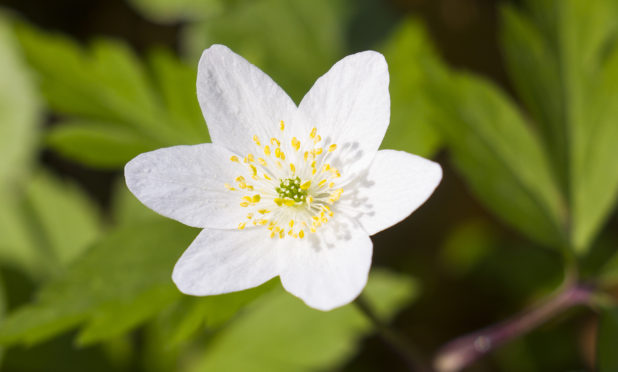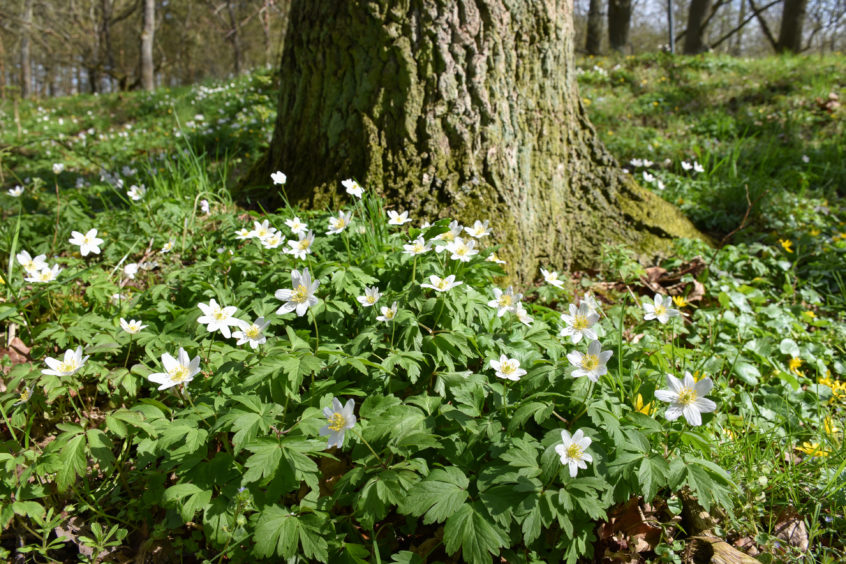Soft sunlight filtering through towering beech trees, the tumbling gurgle of rushing water, and wildflowers peppering the river bankside in a drift of yellow and white polka dots; it is spring and I’m down by the River Earn near Crieff.
Those yellow blooms belong to lesser celandines and the white ones are wood anemones, two of our earliest flowering wild plants. They are such beauties, too, yellow and white spangled colour; a herald to the rapidly emerging spring.
Both plants are very much woodland specialists and their early flowering benefits nectar seeking insects at a time when there are precious few other wildflowers about. It makes sense to bloom now, because the surrounding trees will soon envelope into full leaf, and once they do so, the woodland floor will become a dark and shaded place, not ideal for flowering plants to thrive.
A gentle breeze rippled across the bankside and the little white petals of the wood anemones quivered and shook in quite delightful fashion. How appropriate, I thought, for the wood anemone is often known as the windflower and, indeed, is believed to be so named after the Greek word for wind, anemos.
According to Greek mythology, anemone flowers sprung up where Aphrodite’s tears fell as she wept over the death of her lover, Adonis. Other folklore connects the anemone to magical fairies, who were believed to sleep within their petals after they closed at sunset.
I enjoy the imagery evoked by the 19th Century poet John Clare, who described a clump of wood anemones as “..weeping flowers in thousands pearled in dew”. The wood anemone truly is a flower that has inspired humankind from the earliest of times, and its very presence is an indicator of ancient woodland.
There were other signs of spring by this wonderful riverside walk, which has long been a favourite of mine. Queen bumblebees buzzed and hovered over the ground, looking for holes or crevices to settle down and form new colonies. The previous autumn all the workers, drones and the old queens died off as the cold weather took grip, leaving behind just the young fertilised queens, who hibernate, before emerging in spring to start the cycle of life once more.
The two-tone call of a chiffchaff drifted across from a nearby willow, a blackbird delivered his rich flutey song from the bough of an old ash tree, and a dipper whirred upriver. By the edge of a nearby field, blackthorns were frosted with white-dazzled flowers. Blackthorns flower first, with the leaves following later. Even when the weather turns freezing the flowers will still blossom, with a cold spring traditionally being known as a ‘blackthorn winter’.
The air felt good, the miracle of new life appearing all around; bird song and bees, wildflowers and unfurling leaves; and as I stood on this Perthshire riverbank, I couldn’t think of anywhere else in the world where I would rather be.
Info
Wood anemone seed in Britain is mostly infertile, instead the plant spreads very slowly – just several feet or so across the ground every 100 years – through the growth of its root structure.











